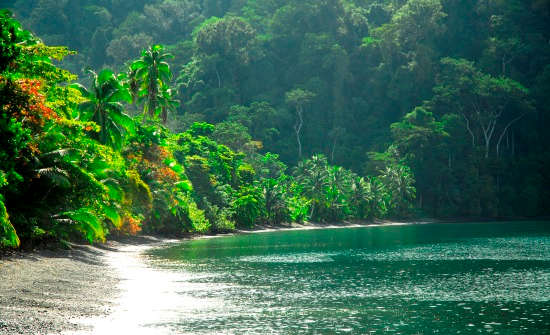Corcovado National Park, located in the wild and untouched Osa Peninsula, is a stunning place known for its incredible variety of plants and animals.
It’s one of the most biologically diverse areas on the planet.
The forests in Corcovado are like what you might imagine when you think of a tropical rainforest: tall trees, big roots that stick out, vines hanging down, and lots of different plants.
The park has the only remaining old forests along the Pacific coast of Central America.
It’s made up of 13 different kinds of environments, including lowland rainforests, misty cloud forests, palm groves, swamps, and coastal areas.
The park can be wet and hard to reach, but the paths are usually in good condition, and there are grassy camping areas near the ranger stations.
There are two stories about how Corcovado got its name.
One says it comes from a rock on the beach that looks like a hump, so people started calling the place “Corcovado” because of it.
Another story says it’s because of the way the river curves and twists, like a horse jumping and being scared.
Corcovado National Park is beautiful and remote, and if you’re lucky, you might see some rare and amazing creatures.
Why is Corcovado National Park a sustainability reference?
☘ Is renowned for its exceptional biodiversity. It is one of the most biologically diverse places on Earth, with a wide range of ecosystems, including rainforests, mangroves, and coastal areas. The park is home to numerous endangered species, including jaguars, tapirs, and scarlet macaws.
☘ Is part of Costa Rica’s extensive system of protected areas. The country has made a significant commitment to conservation by designating over 25% of its land as protected areas.
☘ Local communities and tour operators have developed eco-friendly initiatives, such as low-impact accommodations, responsible visitor management, and nature-based activities that promote education and conservation.
☘ Has implemented significant reforestation efforts.
☘ Many communities surrounding Corcovado National Park practice organic agriculture and farming.
Imagine yourself diving and relaxing under a waterfall in La Paz Waterfall Gardens after a hike in the rainforest!









A

